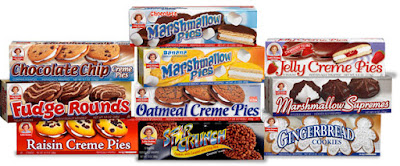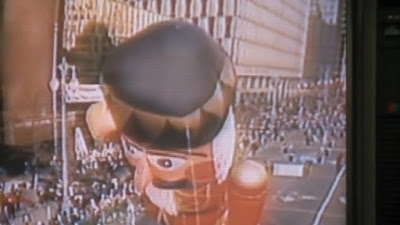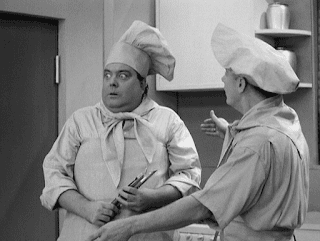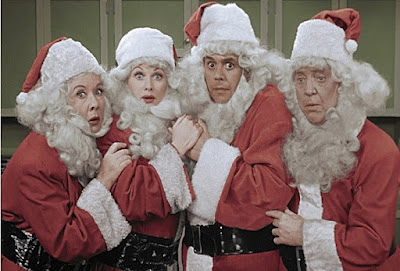Is anything newsworthy happening today (as this gets posted on January 20, 2025)?
Regardless, I thought it would be a great day to continue my "Airlines of YesterYear" series. What better day than Inauguration Day to cover the Trump Shuttle? Not only because it's Inauguration Day but also because the Trump Shuttle plays an important part in the history of aviation.
I'm being serious. The airline and its short history are actually quite significant. More recently, articles have mocked the airline's quick demise, but those are (in my humble opinion) politically motivated. There's plenty to learn about the Trump Shuttle, both good and bad. Interestingly, around 2016, there was a sudden interest in the Trump Shuttle, and the articles only focused on and often embellished the bad.
The truth is, despite its (and his) flaws, the Trump Shuttle truly helped shape an essential segment of the airline industry - one that continues into 2025!
The age-old joke goes, "How do you make a million dollars in the airline industry? Start with a billion!"
Funny, yet true. The airline world is notorious for having small margins, frequent financial losses, and a list of companies that have gone out of business longer than your arm. I even started a section on this site called "Airlines of YesterYear," and after several articles, I've just barely scratched the surface!
Despite how he's considered by the media today, back in the 1980s and 90s, Donald Trump was the King of New York. If Howard Stern would excuse the phrase, Trump was (and still is) King of the Media, too. He was a significant figure in business and pop culture, and the man was beloved by Hollywood celebrities, Wall Street, and the average Joe.
The real estate mogul was known primarily for developments in New York and Atlantic City, New Jersey. When Trump Tower, his gold-laden skyscraper, made its mark on the New York skyline, it signaled his arrival as a major player in Manhattan. To great acclaim, he built The Grand Hyatt New York, Trump Plaza, and New York City's palatial Plaza Hotel. Most people probably would recognize The Plaza Hotel as Kevin's swanky lodgings in Home Alone 2. Trump even makes an appearance in the film as part of a deal made to use his hotel.
Beyond real estate, Trump ventured into various businesses, such as owning sports teams like the New York Generals of the USFL. He became a boxing and pro-wrestling promoter and owned all or parts of several beauty pageants, like Miss USA, Miss Teen USA, and Miss Universe. He even attempted to purchase the New England Patriots and Buffalo Bills NFL teams.
The Don was also very quick to use the media to enhance his image, appearing frequently on talk shows, in magazines, and as a permanent fixture in the New York City social scene.
His book, "The Art of the Deal," became a best seller in 1987, further cementing his status as a celebrity and business icon. Over the years, he ran casinos, hotels, apartment buildings, clothing lines, and more. Each carried his last name, bringing a certain cache and sense of "luxury."
Indeed, he had his detractors as well. Not all of his publicity from this period was good, and he truly lived by the motto, "Any publicity is great publicity."
Take my mother, for example. She would occasionally watch afternoon talk shows like Oprah and read the headlines on the "rag" magazines at the supermarket checkout, and she'd always comment with disgust when she saw his face. "What a not-nice man!" she'd say as she pointed at his face on TV. Then, when I'd ask why, she'd always tell me, "He's such a sleazeball for what he did to his wife!"
My mother was referring to how his personal life played out in the tabloids. I can remember this conversation between us several times during his public divorce from Ivana Trump and his new romance with Marla Maples. Mom has since had a change of heart about the man my family calls Uncle Donnie, but that is most definitely another story for another day.
Back in the 80s, and yes, still today, some viewed him as brash, arrogant, and unscrupulous. His aggressive self-promotion and high-profile lifestyle were a point of contention, and he often rubbed people the wrong way.
However, to many, he represented the American Dream - fame, wealth, and power. His lifestyle, business acumen, and media savvy made him an aspirational figure, and his name alone would represent luxury, opulence, and wealth.
And right before the 90s began, as the old joke says, Donald Trump set out to make a million out of a billion when he entered the airline industry. In 1989, he started The Trump Shuttle.
First, I feel the need to give a little history about an essential segment of the airline industry.
The hourly shuttle service between Boston, New York, and Washington, D.C., known as the "Northeast Corridor," has been a pivotal section of the U.S. airline industry since the early 1960s. This business-centric corridor is a highly sought-after, competitive market, just like any other industry. Providing nearly around-the-clock service between the city pairs at hourly intervals has been essential to many airlines' past and present.
Eastern Airlines pioneered the concept of hourly shuttle flights in 1961 when it launched the first shuttle service between New York's LaGuardia Airport and Boston. The service was later expanded to include Washington's National Airport. Founded by Floyd Hall, Eastern's then-president, the airline offered business travelers frequent flights with no advance reservations necessary.
The service was designed to offer many options for businessmen who often make last-minute trips to meetings. This model set a precedent in flexibility for airline scheduling and became a textbook example of how a high-density route could be profitable with the right operational strategy. This would lead to increased competition, innovations in service, pricing, and schedule reliability as airlines vied to capture the lucrative business travel market.
Like the rest of the airline industry, the health of the shuttle service relied on broader economic trends. The margins on the flights are razor thin, even less so than the already thin industry average, and most flights operated in today's environment are loss-leaders to get businesses and businessmen used to traveling on a specific airline and reliant on that airline's frequent flyer program.
Several airlines have attempted shuttle service in the past: New York Air, Eastern Airlines, Pan Am, Delta Air Lines, US Airways, American Airlines, JetBlue Airways, and today's topic: The Trump Shuttle.
Trump officially entered the aviation world in March 1988 when he purchased three Sikorsky S-61 helicopters from Resorts International. Trump made a deal with television star Merv Griffin, who had just taken control of the hotel and casino conglomerate Resorts International, who had previously used the helicopters to shuttle high rollers to and from the Resorts Casino Hotel in Atlantic City. Trump began using them for the same purpose for his casinos, Trump Regency (Trump World Fair), Trump Taj Mahal, Trump's Castle (Trump Marina), and The Trump Plaza.
The Trump and Atlantic City story could also fill an entirely different article on another day.
The green and orange Resorts helicopters were repainted in the now-familiar black, red, and gold emblazoned with the Trump Air logo. That paint scheme would continue on the Trump Shuttle (albeit primarily white) and, later, on his personal Boeing 727. His 727 was replaced in 2011 with the Boeing 757 we know today as "Trump Force One."
The helicopters would eventually operate under the name "Trump Air" and shuttle businessmen from Wall Street Heliport and La Guardia Airport to connect to the Trump Shuttle flights to Boston or Washington, DC. Trump Air's helicopter service would also provide flights from Manhattan to the Hamptons.
Eastern Airlines began facing financial difficulty when the airline industry was deregulated in the 1970s. Facing high debt loads and labor disputes in the early 80s, the company was acquired by corporate raider Frank Lorenzo, who moved many of Eastern's assets to his other airlines, Texas International and Continental Airlines. The airline would limp along, selling off assets, until it eventually closed its doors in 1991.
But as the airline's financial future looked bleak, Eastern's shuttle service was still doing well. Eastern organized the shuttle service into a separate company under the leadership of Bruce Nobles, intending to sell it to raise cash for the rest of the company.
Frank Lorenzo met Donald Trump at a party in mid-1988 and subsequently negotiated the sale of the lucrative shuttle operation. Amidst a prolonged mechanics strike action, on October 5, 1988, Donald Trump made an official offer on Eastern's shuttle flights.
Shortly after agreeing to Trump's offer, Eastern filed for Chapter 11 bankruptcy protection. Many passengers had already switched to Pan Am's Shuttle over fears of the disruptive mechanics' labor actions. After the bankruptcy filing, even more passengers switched to Pan Am, fearing Eastern would cease operations altogether.
Trump used this situation to negotiate additional aircraft and a lower purchase price from Eastern. However, America West Airlines submitted a more competitive offer that was looked upon favorably by the bankruptcy court.
It soon became apparent that America West did not have the financing, and in May 1989, the bankruptcy court approved Trump's new offer of $365 million. The deal was completed in June after financing was secured through a loan from Citibank and a syndicate of other smaller lenders.
For his $365 million, Trump received 17 Boeing 727 aircraft, gate space, landing rights, employees, and equipment. He immediately branded the company and its aircraft under the "TRUMP" name and intended to transform Eastern's "no-frills" operation into a luxury first-class service focused on speed, comfort, and reliability.
Years later, detractors claimed that starting a new airline would have cost less than Trump agreed to pay. Trump, then and now, justified his expense by saying he purchased a turnkey operation with a higher market share, already trained personnel, and a loyal (although decreasing) customer base.
After taking control of the operation, Trump invested heavily in his signature "TRUMP" branding. The fleet was immediately painted in a recognizable white, black, and gold scheme. At the same time, the interior was reconfigured with luxurious amenities, including plush leather seats, maple wood veneers, and gold-plated fixtures, including seat belt buckles and, yes, golden toilet seats. This approach to upscale amenities was novel for the shuttle service, which had been "no-frills" under Eastern and Pan Am.
Trump was also eager to pioneer several new technological advancements with his new company. The airline introduced some of the first passenger self-service check-in kiosks at LaGuardia. It also partnered with LapStop, a startup company that rented laptop computers to passengers for use on business trips. Trump Shuttle was also one of the first airlines to feature the "Air Fone" by GTE, an in-flight telephone system. Remember those things?
Trump Shuttle flights offered free meals, including chicken and steak on some flights, and complimentary champagne, beer, and wine. Not bad for a 45-minute flight from LaGuardia to Boston, although flight attendants and customers would complain about it!
Trump's attention to detail, luxurious seating, and upscale fixtures showed future airlines how branding could differentiate the airline market, even between different segments and routes operated by the same company. Afterward, the airline industry adopted this model, causing companies to consider their brand identity more seriously.
Both Trump and Pan Am spent millions on advertising before the launch of the Trump Shuttle to maintain strong positions in the market. The debut flight on June 8, 1989, had all of the ritz and glamor you'd expect from a Trump event, although bad weather forced the first departure to leave 45 minutes late. Detractors would use this to mock Trump's full-page advertisements that promised punctuality, with the tagline "7:00AM does not mean 7:01AM."
Following Eastern's customer loss, the new airline immediately saw consumer interest rise. By the end of that summer, the now-Trump-run shuttle service had returned to a substantial market share of 45% of all Northeast Corridor business.
At its peak, Trump Shuttle owned 25 Boeing 727s. Eight were the smaller -100 variant, and the rest were the modern -200 variant.
In an article at Conde Nast Traveler, journalist Barbara Peterson described the Trump Shuttle experience as significantly better than what other airlines were providing, but short flight segments hurt the high-class service. She said,
"I flew a couple of times on the Trump Shuttle... and the flights themselves were perfectly pleasant. In the lounge-like gate areas, you could pick up a free newspaper or snack; in-flight, there were bagel breakfasts in the morning and complimentary cocktails with boxed meals later in the day.
"But what I also recall on a trip from D.C. to New York was that I was barely into my chicken Caesar salad and chardonnay when the 'prepare for landing' call came from the cockpit. The not-so-glamorous reality is that it was a 45-minute flight, and about 20 of those minutes were spent getting up and down from cruising altitude. The service was classy, yes, but it was sort of like having the 21 Club cater a Greyhound bus trip."
Trump gave the flight attendants new posh uniforms, even with fake pearl necklaces. Other ideas for the airline were eventually dropped, such as full-length mirrors in the bathroom (too heavy,) plush carpets (drink carts couldn't roll easily across them), and an inflight magazine centered on Donald Trump and his business empire (deemed too expensive to publish).
The media hype around the airline worked, and Trump Shuttle quickly gained more market share. Pam Am claimed that Trump Shuttle never had more than 45%, but Trump claimed that he had "just over 50%."
That first summer, in August 1989, the airline saw its first and only "incident" when a Trump Shuttle flight arriving in Boston had a nose gear failure upon landing. It was later reported that the failure was traced back to previous maintenance errors by Eastern before the acquisition. Following the incident, Donald Trump personally flew on the very next flight to Boston to manage the public reaction and instill confidence in his airline.
When Trump took over the shuttle service, the airline industry was still adjusting to its new deregulated environment. Trump Shuttle demonstrated how new entrants (and there would be many) could leverage existing infrastructure and route networks for a competitive advantage.
However, the company struggled to thrive economically in a tricky economic climate. The recession that began as the decade turned into the 1990s impacted the company's financial viability and is often cited as a major reason for the airline's downfall. As the United States entered an economic slowdown, business demand fell, and passenger traffic on the shuttle routes plummeted for both companies.
In August 1990, the Iraqi invasion of Kuwait caused jet fuel prices to double. This only exacerbated the higher costs of running the Trump Shuttle, specifically an aging fleet that required a lot of fuel on frequent short flights.
As the airline's operating costs rose, many corporate customers were slashing their travel budgets. They switched to economy flights on Pan Am or stopped flying altogether, taking Amtrak or having meetings via telephone instead.
Trump initially blamed Bruce Nobles, who had stayed on from Eastern. In June 1990, Trump fired Nobles and set to creating a new strategy for the airline, calling his company an "aesthetic success." He said, "It will be a financial success, but right now, I'm upset with the people running it."
Trump's new management team planned to offer shuttle flights and leisure services to Mexico, the Caribbean, and Atlantic City. These flights would give passengers more time to enjoy the luxurious service onboard and expand the company's customer base beyond northeast businessmen.
Over the summer, the airline began conducting special charter operations. It carried Nelson Mandela on his eight-city tour of the United States in June. The Trump Shuttle was also awarded a military contract to ferry US military personnel between key domestic Air Force bases along the East Coast.
Unfortunately, it was too little, too late. In September 1990, the airline missed a $1.1 million interest payment. The loans were considered in default, and the airline's ownership was transferred to the banks.
Donald Trump had personally guaranteed $135 million of the Trump Shuttle debt. Following the airline's default, Citibank arranged for Northwest Airlines to assume control of the shuttle in exchange for relieving Trump's personal liability. All sides were reported to have agreed to the deal in April 1991 by the Wall Street Journal.
Almost simultaneously, Delta Air Lines was making a deal to buy the Pan Am Shuttle amidst the demise of the once-great Pan Am.
In August 1991, Northwest announced that the acquisition of the Trump Shuttle had been canceled due to demands made by Trump Shuttle unions for parity with Northwest's employees and Trump's refusal to discount the airline's price to reflect the new higher salaries.
Ultimately, in December 1991, US Air agreed to take control of Trump Shuttle for up to ten years, with an option to outright purchase the company after five years. This agreement relieved Trump of over $100 million of his personal guarantee, leaving him on the hook for approximately $25 million and agreeing to relinquish control of his airline.
On April 7, 1992, Trump Shuttle ceased to exist when it was merged into a new corporation called Shuttle, Inc. A week later, on April 12, Shuttle, Inc. began operating under "USAir Shuttle."
In March 1997, the company rebranded as US Airways and announced the purchase of Shuttle, Inc. on November 1, 1997. The shuttle flights were kept separate as "US Airways Shuttle" until July 2000, when they were fully integrated into US Airways.
In October 2015, US Airways merged with American Airlines, and the shuttle service was again rebranded as "American Airlines Shuttle." The Shuttle part was eventually dropped again, and the flights operated under the American Airlines banner.
Years later, in an interview with The Street, Trump said, "It all worked out well for me. I got to run an airline for a couple of years, and I made a couple of bucks. The airline business is a tough business, but I did great with it."
Estimates from various sources claim the airline lost between $50 million and $128 million while under Trump's control, but that doesn't mean he personally lost any money, I suppose.
During its time in the skies, The Trump Shuttle gained a good reputation for excellent service. Still, it was quickly stricken with operational challenges in the weather-plagued and heavily restricted air traffic control environment of the Northeast. Shortly after acquiring the airline, new labor disputes began to arise after years of stagnant and reduced pay under Eastern and ongoing Eastern mechanics' labor actions. Higher operating costs, due to higher than average wages and the high cost of doing business in the North East, also made maintaining a consistent quality product challenging.
Trump also faced a dilemma when purchasing Eastern's aging Boeing 727s. Although the used aircraft initially kept startup costs down, they later led to higher maintenance expenses.
While the Trump Shuttle ceased to exist in its original form in 1991, the approach to luxury influenced how airline services evolved. Competitors took note of its successes and failures and soon began offering a business or domestic first-class product on their own shuttle flights.
Though short-lived, the Trump Shuttle was an interesting experiment in luxury branding within the airline industry. It highlighted the tightrope between luxury and cost-savings, operational challenges in complex airspace, and how overall economic conditions affect aviation more than most. The Trump Shuttle story is often discussed in analyses of business strategies, notably how personal branding and marketing can both propel and undermine a business venture.
Funny enough, before Christmas, when I decided to write this article, I was at work and met a fellow pilot who told me, during our conversation, that he once worked at Trump Shuttle. I asked his thoughts, and he said it was a great place to work. In his opinion, had the economy not tanked at the start of the 1990s, the airline would still be around today.
I'd agree with him, at least, that the company would have likely lasted another decade until September 11, 2001, when so many other small airlines went out of business. Could it have continued? Sure, but in the age of mergers and acquisitions after 9-11, if Trump Shuttle had survived to that point, it would have been gobbled up by a much larger airline.
In any event, the man I spoke with was just a pilot and not someone who had been in the boardrooms. However, he was also someone who was actually there, while the rest of us can just read about the company online.
Like the Tootsie Pop commercial says... the world may never know.














.png)





Comments
Fascinating. Somehow the whole shuttle service flights in the northeast is a blind spot in my general knowledge. This was a fun AND educational read.
ReplyDeleteThanks for the kind words Mickey! I flew those shuttle routes for years (by choice) and wish I still could. Easy flying and I'd get to be home every night! :)
DeleteI agree with Mickey (whose site is another rabbit hole I’m starting to wander down…). I vaguely remember something about a Trump airline back in the day, but I had no idea about a lot of the things you mentioned. I’m a little late to the party, but this was a great read.
ReplyDelete